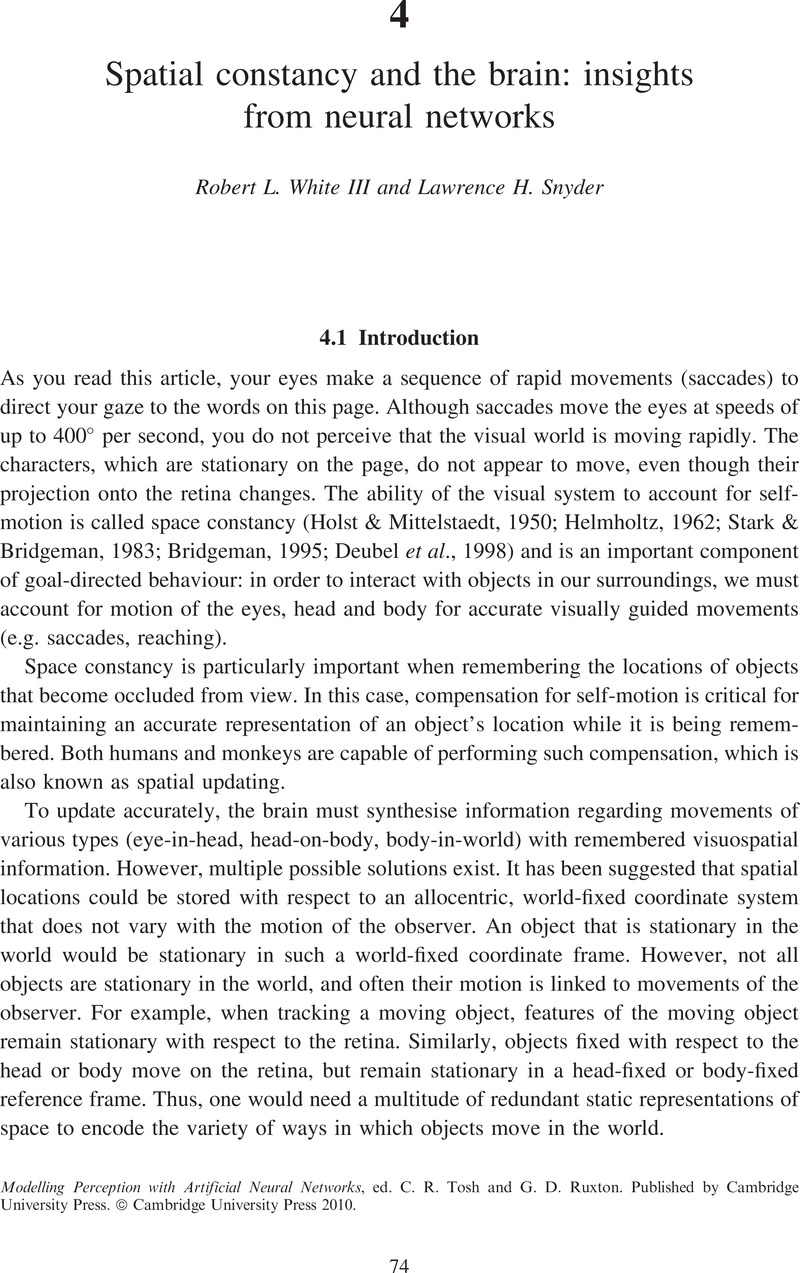Book contents
- Frontmatter
- Contents
- Contributors
- Introduction: Modelling perception with artificial neural networks
- Part I General themes
- Part II The use of artificial neural networks to elucidate the nature of perceptual processes in animals
- 3 Correlation versus gradient type motion detectors: the pros and cons
- 4 Spatial constancy and the brain: insights from neural networks
- 5 The interplay of Pavlovian and instrumental processes in devaluation experiments: a computational embodied neuroscience model tested with a simulated rat
- 6 Evolution, (sequential) learning and generalisation in modular and nonmodular visual neural networks
- 7 Effects of network structure on associative memory
- 8 Neural networks and neuro-oncology: the complex interplay between brain tumour, epilepsy and cognition
- Part III Artificial neural networks as models of perceptual processing in ecology and evolutionary biology
- Part IV Methodological issues in the use of simple feedforward networks
- Index
- References
4 - Spatial constancy and the brain: insights from neural networks
from Part II - The use of artificial neural networks to elucidate the nature of perceptual processes in animals
Published online by Cambridge University Press: 05 July 2011
- Frontmatter
- Contents
- Contributors
- Introduction: Modelling perception with artificial neural networks
- Part I General themes
- Part II The use of artificial neural networks to elucidate the nature of perceptual processes in animals
- 3 Correlation versus gradient type motion detectors: the pros and cons
- 4 Spatial constancy and the brain: insights from neural networks
- 5 The interplay of Pavlovian and instrumental processes in devaluation experiments: a computational embodied neuroscience model tested with a simulated rat
- 6 Evolution, (sequential) learning and generalisation in modular and nonmodular visual neural networks
- 7 Effects of network structure on associative memory
- 8 Neural networks and neuro-oncology: the complex interplay between brain tumour, epilepsy and cognition
- Part III Artificial neural networks as models of perceptual processing in ecology and evolutionary biology
- Part IV Methodological issues in the use of simple feedforward networks
- Index
- References
Summary

- Type
- Chapter
- Information
- Modelling Perception with Artificial Neural Networks , pp. 74 - 92Publisher: Cambridge University PressPrint publication year: 2010

